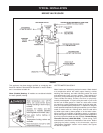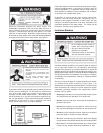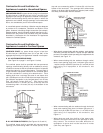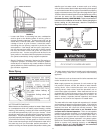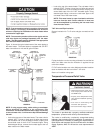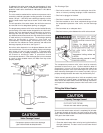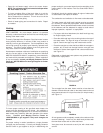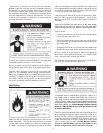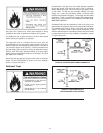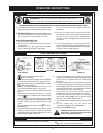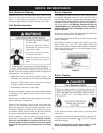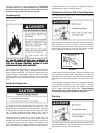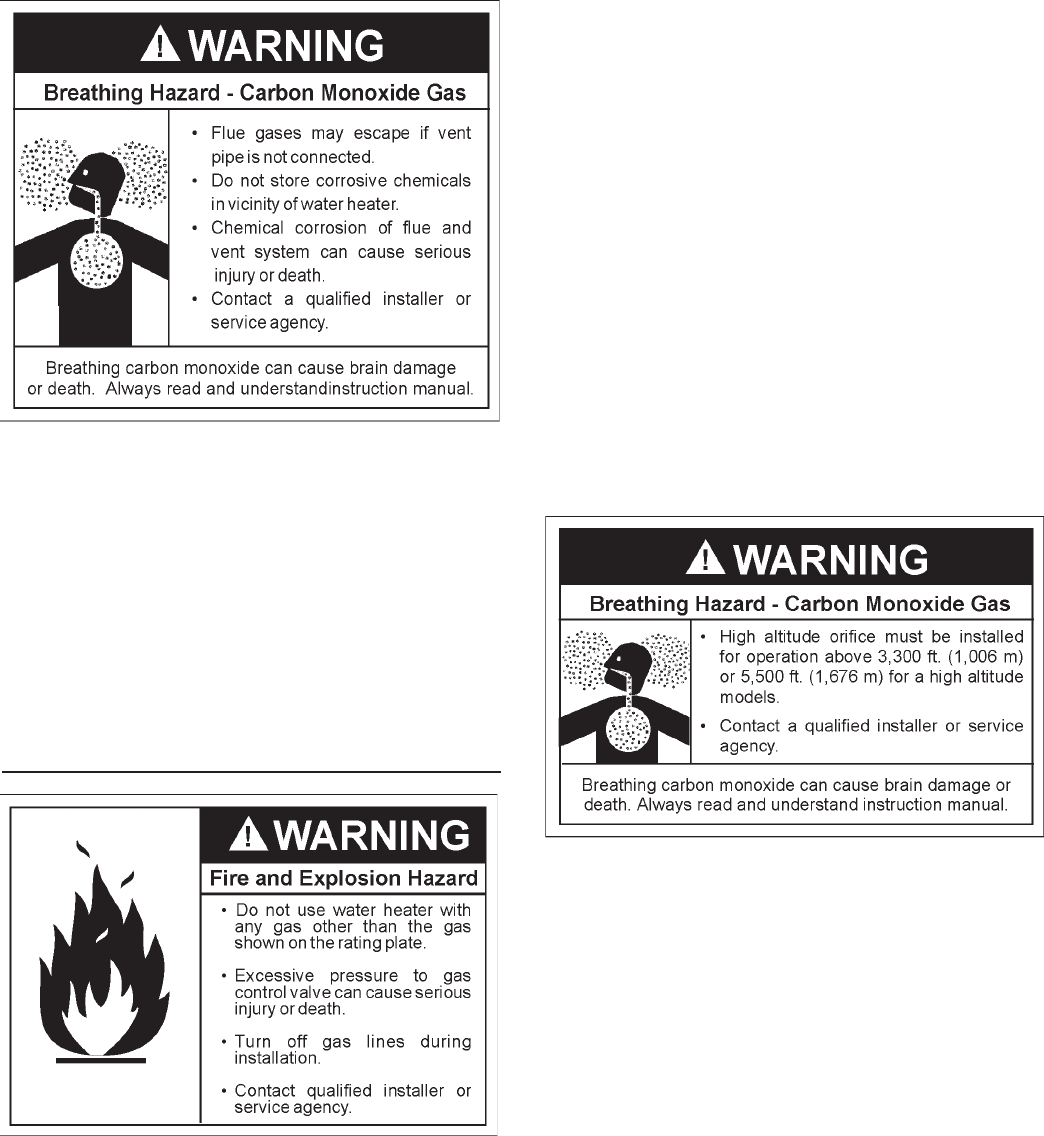
17
There must be a minimum of 6 inches (153 mm) clearance
between single wall vent pipe and any combustible material.
Fill and seal any clearance between single wall vent pipe and
combustible material with mortar mix, cement, or other
noncombustible substance. For other than single wall, follow
vent pipe manufacturer’s clearance specifications. To insure
a tight fit of the vent pipe in a brick chimney, seal around the
vent pipe with mortar mix cement.
Failure to have required clearances between vent piping and
combustible material will result in a fire hazard.
Be sure vent pipe is properly connected to prevent escape of
dangerous flue gases which could cause deadly asphyxiation.
Chemical vapor corrosion of the flue and vent system may
occur if air for combustion contains certain chemical vapors.
Spray can propellants, cleaning solvents, refrigerator and air
conditioner refrigerants, swimming pool chemicals, calcium
and sodium chloride, waxes, bleach and process chemicals
are typical compounds which are potentially corrosive.
Gas Piping
Make sure the gas supplied is the same type listed on the
model rating plate. The inlet gas pressure must not exceed
14 inch water column (2.6kPa) for natural and propane gas
(L.P.) gas. The minimum inlet gas pressure listed on the rating
plate is for the purpose of input adjustment.
If the gas control
valve is subjected to pressures exceeding 1/2 pound per square
inch (3.5kPa), the damage to the gas control valve could result
in a fire or explosion from leaking gas.
If the main gas line Shut-off serving all gas appliances is used,
also turn “OFF” the gas at each appliance. Leave all gas
appliances shut “OFF” until the water heater installation is
complete.
A gas line of sufficient size must be run to the water heater.
Consult the current edition of National Fuel Gas Code ANSI
Z223.1/NFPA 54 and your gas supplier concerning pipe size.
There must be:
• A readily accessible manual shut off valve in the gas supply
line serving the water heater, and
• A drip leg (sediment trap) ahead of the gas control valve to
help prevent dirt and foreign materials from entering the
gas control valve.
• A flexible gas connector or a ground joint union between the
shut off valve and control valve to permit servicing of the unit.
Be sure to check all the gas piping for leaks before lighting the
water heater. Use a soapy water solution, not a match or open
flame. Rinse off soapy solution and wipe dry.
The minimum inlet gas pressure shown on the rating plate is
that which will permit firing at the rated input.
If a standard model is installed above 3,300 feet (1,006 m) or a
high altitude model is installed above 5,500 feet (1,676 m) the
input rating should be reduced at the rate of 4 percent for each
1,000 feet (
305 m ) above sea level which requires replacement
of the burner orifice in accordance with National Fuel Gas Code
ANSI Z223.1/NFPA 54. Contact Maytag Customer Service
Center at 1-800-788-8899 or your local gas supplier or call
for further information.
Failure to replace the standard orifice with a high altitude orifice
when installed at elevations above 3,300 feet (1,006 m) or
above 5,500 feet (1,676 m) for high altitude model could result
in improper and inefficient operation of the appliance, producing
carbon monoxide gas in excess of safe limits, which could
result in serious injury or death. Contact Maytag Customer
Service at 1-800-788-8899 or your local gas supplier for any
specific changes which may be required in your area.



